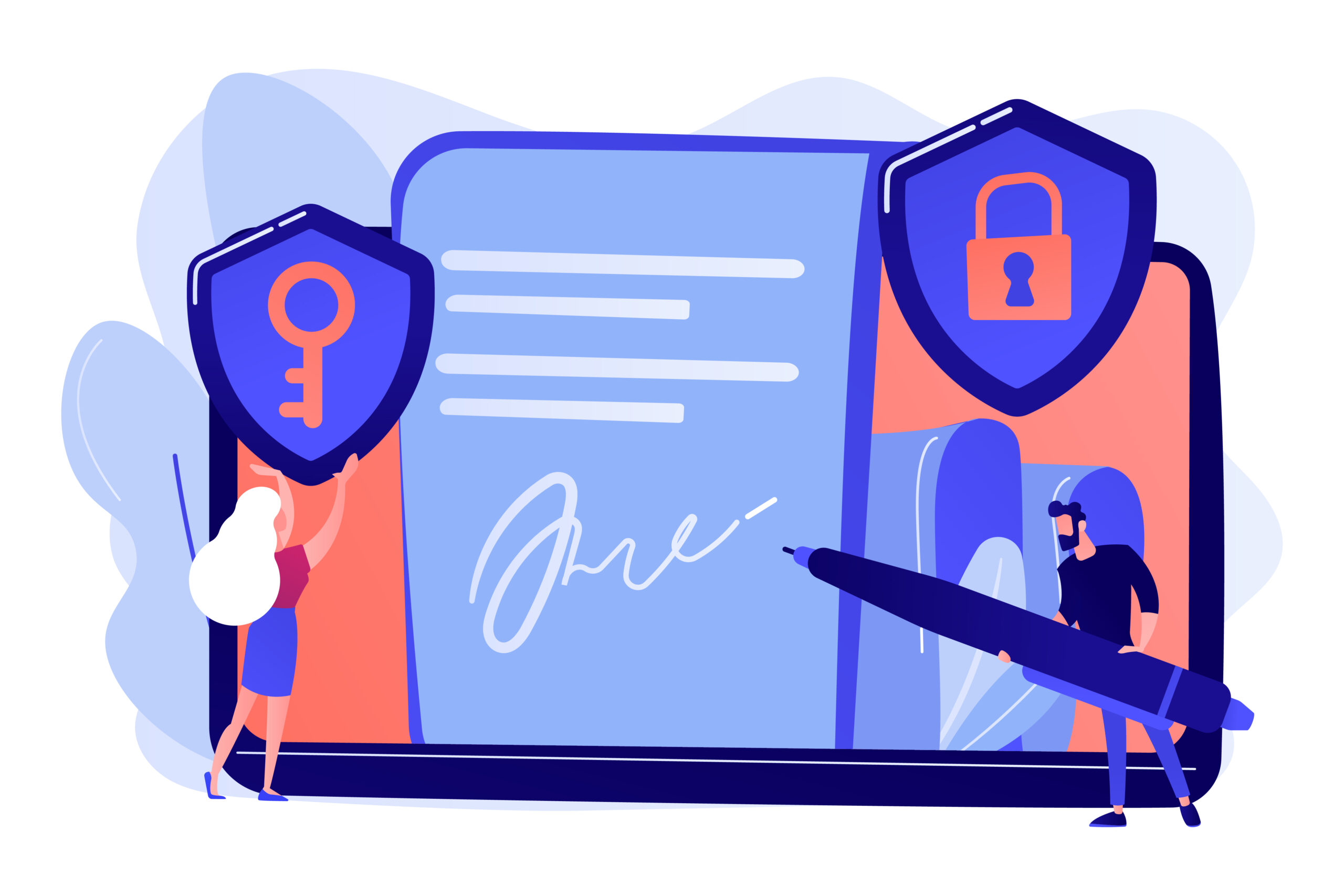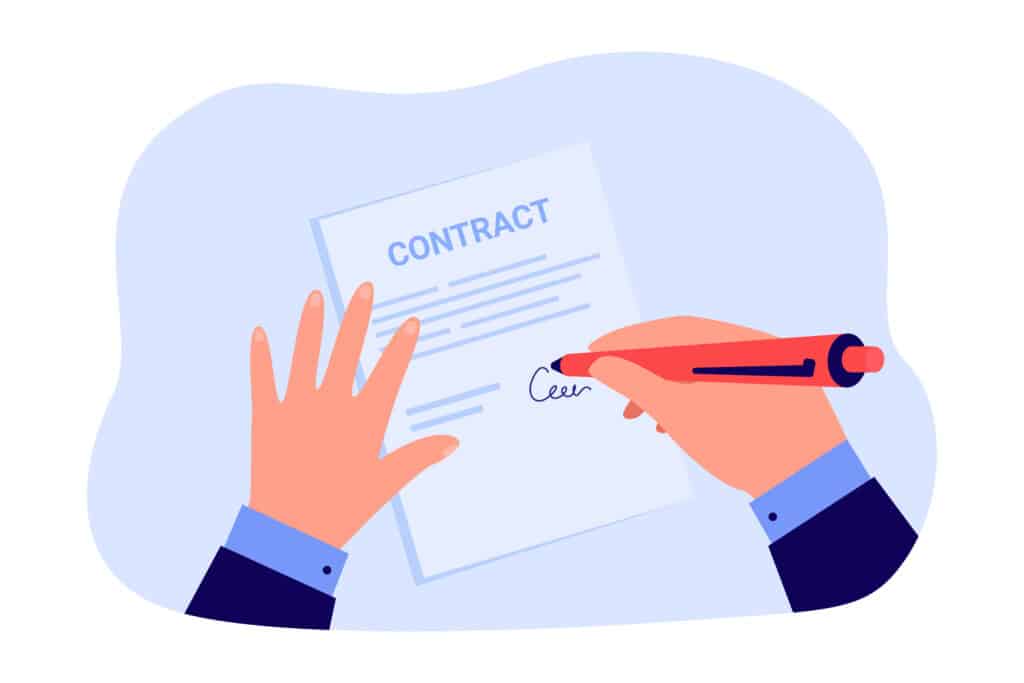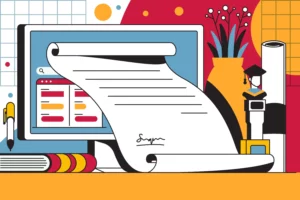How we do business and sign documents has changed in today’s world. We’re not just using pen and paper to sign things anymore. Thanks to technology, electronic signatures or eSignatures have become popular because they are safe and easy to use.
It’s important for both companies and people who want to move from old-school signing methods to digital ones, to understand how electronic signatures differ from traditional ink signatures. In this blog post, we’ll take a closer look at both eSignatures and wet ink signatures by explaining what they are, comparing their pros and cons, as well as showing how eSignatures can be used in different types of jobs.
By the time you finish reading this blog post, you’ll know why moving from using wet ink to eSignatures is beneficial. You will also learn about some challenges you might face while making that switch. So let’s get started on learning more about the fascinating shift towards digital ways of signing documents.
Understanding eSignatures and Wet Signatures

To get the hang of how we moved from using wet ink to electronic signatures, it helps to know what these things mean. An electronic signature is just a digital way for someone to put their signature on documents online instead of signing by hand. This method makes it easier and quicker to sign off on contracts and agreements.
With that in mind, when we talk about wet ink, we’re referring to the old-school approach where you use a pen and paper to sign your name. These traditional ink signatures have been around forever, playing a big role in making contracts official, and are still pretty common in lots of legal stuff and business deals.
Defining eSignatures: More Than Just Digital Ink
When we talk about eSignatures, it’s not just about turning traditional signatures into a digital form. They’re part of a bigger picture that includes various signature solutions with different security and authentication levels.
- Simple e-signatures (SES): These are pretty straightforward and are often used when there isn’t much risk involved. You might see things like typed names, scanned images of signatures, or even checkboxes that show someone agrees to something. They’re the simplest type out there.
- Advanced e-signatures (AES): With these, you get more safety features thrown in the mix—think biometric data or PIN codes to prove who you are signing off as yourself securely can involve using special technology for an extra layer of protection.
- Qualified e-signatures (QES): Now these take things up a notch by sticking to very strict rules and using secure tech devices for verifying identities; they’re especially common where following tight regulations is key.
Wet Signatures
Electronic signatures are super handy, but there’s something special about the old-school method of signing with a pen and ink on paper. This traditional way of signing documents has been around for ages and is often seen as more genuine and trustworthy.
For some really important stuff like legal matters or business deals, using wet ink to sign is still pretty much the go-to. Things like wills, kicking someone out of a property, orders from a judge, claiming insurance money, getting loans from banks, or proving who you are to someone official might all need an actual signature on a physical document.
Even though digital signatures are becoming more common these days ink signatures haven’t lost their charm. They remind us how things were done in the past and mean a lot to certain people and places because they carry that sense of authenticity that only something tangible can provide.
Related Article: What Is ESign (ESignature)? How To E-Sign Documents Online?
Comparing eSignatures and Wet Signatures

When we think about moving from using wet ink to eSignatures, it’s important to look at the pros and cons of each way of signing. Both electronic signatures and wet ink are used for approving contracts and agreements, but they’re quite different in what they offer.
With electronic signatures, you get benefits like saving money, time-saving features, better security measures, and keeping everything stored in one place. On the flip side, there are times when a wet signature is still needed because of its legal recognition and how genuine it seems to matter.
Understanding how these two ways of signing differ from each other can help both companies and people figure out which option fits best for what they need.
Accessibility and Convenience in Various Scenarios
One big plus of using eSignatures instead of traditional wet signatures is how easy and convenient they are to use in different situations. With electronic signatures, people and companies can sign documents anytime, anywhere without having to meet face-to-face or send papers through the mail.
This ease of use means saving time and making customers happier. For instance, in human resources, using electronic signatures makes it quicker to handle things like onboarding contracts, approvals, and exit contracts. This efficiency allows for more agreements to be done each day.
In the world of law, eSignatures make it faster to get important papers like loan agreements, rental agreements, and promissory notes signed off. This cuts down on waiting times and avoids any late fees or penalties. In sales, electronic signatures mean deals can be closed quicker since there’s no need to wait for paper contracts to be sent out. It also creates a smoother start for clients, vendors, or suppliers getting on board.
Related Article: Best Electronic Signature Software: Top 7 E-Sign Tools In 2024
The Advantages of Transitioning to eSignatures

- Cost Efficiency and Environmental Benefits: With eSignatures, there’s no need for paper, ink, or places to store all that paperwork. This means you can save money and also cut down on paper waste.
- Enhancing Document Security and Integrity: Electronic signatures come with good security features like encryption and ways to check who signed what, plus extra steps for verifying identities. All this helps make sure documents are real and haven’t been messed up.
- Streamlining Business Operations: Getting rid of the need for physical papers makes everything run smoother. It speeds up how work gets done by making document handling easier which cuts down on the hassle for everyone involved. Plus, it boosts productivity big time.
Cost Efficiency and Environmental Benefits
Switching from using wet ink to eSignatures can help save money and is better for the planet. Without needing paper, ink, or places to keep files, companies can cut down on expenses and do their part in protecting the environment.
- Less paper usage means we’re not spending as much on printing.
- We also save by not buying lots of ink or other stuff needed for printing.
- No need to find room to store all those papers anymore.
- Documents get done quicker, which means less time spent on paperwork.
- Everyone gets more work done without dealing with piles of documents.
Enhancing Document Security and Integrity
In today’s world, where everything is moving online, keeping documents safe and sound is important. That’s exactly why eSignatures are becoming a big deal. They’re way better at making sure your documents stay secure than the old-school pen-and-paper signatures.
With electronic signatures, you get all these security features like encryption to keep data safe, authentication to make sure it’s you signing off on something and audit trails so there’s a record of who did what and when. This means no one can mess with or fake your documents without getting caught. It’s pretty reassuring for both companies and regular folks that their crucial paperwork is in good hands.
Related Article: 5 Siuations When Negotiation Isn’t Advisable
Overcoming Challenges in Adopting eSignatures

Moving from using wet ink to eSignatures isn’t always easy. There are some hurdles along the way, but with the right knowledge and approach, we can get past them. One of the main issues people run into is making sure everything’s secure and meets worldwide rules.
Addressing Common Security Concerns
When people think about using electronic signatures, they’re often worried about keeping them safe from anyone who shouldn’t see or change them. They want to make sure that their electronic signature is kept away from harm’s way.
To tackle these worries, signature solutions come with safety features like encryption and ways to check who’s signing. With encryption, only the folks meant to see the signed documents can do so. Checking who signs helps stop someone else from pretending to be you and keeps the document true to its purpose.
On top of this, an audit trail is a key part of making sure everything stays on board with electronic signatures. This audit trail keeps track of every step taken and any changes made during the signing process. It makes it easy to spot if something fishy happens and proves that everything was done right by the book.
By focusing on these security issues and putting strong protections in place, both companies and individuals can feel good about moving forward with eSignatures while keeping their important info under wraps.
Ensuring Compliance with Global Standards
When you start using electronic signatures, it’s really important to make sure they’re okay according to the rules of different places and jobs. Some areas or types of work might have their own special rules for how you can use these eSignatures, so sticking to those is key if you want your signed papers to be taken seriously.
With signature solutions that follow big international rules like the eIDAS Regulation in Europe, you get a safe way for electronic signing that courts and businesses will accept. These platforms are built with tough security stuff like digital certificates and codes that scramble information so only the right people can see it.
On top of this, knowing what specific laws apply to your field is super important. For instance, if you’re dealing with health records or bank info, there are extra tight standards because this kind of data is very private.
Related Article: Legal Risk Management: A Comprehensive Guide For Businesses
Step-by-Step Guide to Implementing eSignatures

Switching to electronic signatures takes some thought and planning. Here’s a simple guide to help you make the change smoothly:
- First off, figure out what needs signing electronically. Look at which documents and steps in your process could use an eSignature. Think about what features are important for you.
- With that info, pick the best electronic signature solution for your situation. You’ll want to look into how safe it is, how easy it is to use if it works well with other tools you have, and whether they offer good support.
- Before going all in, test the waters first and get your team up to speed on using this new tool safely and effectively.
- Next up, let everyone know – from clients to coworkers – that you’re moving over to eSignatures. Share why it’s a good move and be ready for any questions or worries they might throw your way.
- Finally, start putting those electronic signatures on everything that fits the bill! Keep an eye on how things are going so you can tweak anything not working quite right.
Choosing the Right eSignature Solution for Your Needs
- Security: Make sure it has strong security stuff like encryption, ways to prove who signed something, and a record of changes so your documents are safe and sound.
- User-friendliness: You want something easy for both the people signing things and those setting it up. A simple setup makes everyone happier during the signing process.
- Integration capabilities: It should play nicely with whatever systems or software you already use. Being able to connect with common document management tools helps everything run smoother.
- Customer support: Go for a service that won’t leave you hanging if problems pop up. Good help can make all the difference when implementing an electronic signature solution.
Related Article: How to choose the right CLM software
Best Practices for Smooth Transition and Adoption

- Make a plan and talk about it: Set up how you’re going to start using electronic signatures and let everyone involved know. Talk about why it’s a good move and be ready to answer any questions or worries people might have.
- Teach your team: Your employees must know how to use the electronic signature solution right and safely. Show them what they need to do legally when signing documents electronically, along with some tips for best practices.
- Begin with baby steps: Try out electronic signing on just a few documents or in certain areas first. This lets you see how things go and fix anything that needs tweaking. As everyone gets more comfortable, then bring in more eSignatures into different parts of work.
- Keep an eye on things: Always watch how the change is going and check if the new way of signing documents is working well. Ask for feedback from both workers and other key players so you can spot any issues early on.
- Update regularly: Stay informed about new stuff happening around electronic signatures including laws that affect them. Make sure your methods are still okay under these rules by reviewing everything now and thinly.
Related Article: Contract Migration: Expert Tips For Success
Frequently Asked Questions
Can eSignatures be used for all types of documents?
ESignatures are handy for a bunch of different documents like contracts, agreements, consent forms, and others. With the same legal effect as traditional wet signatures, they’re accepted across various industries and places around the world.
How do I verify the authenticity of an eSignature?
When it comes to checking if an eSignature is the real deal, some security features come into play. Things like encryption and making sure the person signing is who they say they are (that’s authentication), along with having an audit trail, help make sure that the document signed stays genuine.
What are the initial steps to transition to an entirely digital signature process?
When you start moving to a fully digital signature setup, the first things you need to do are figure out what exactly you need, pick the best electronic signature solution for those needs, test it, and teach your team how to use it. You also have to let everyone involved know about the change. Then, little by little, begin using eSignatures for documents and processes where they fit.
Conclusion
Switching from using wet ink to eSignatures is a big step forward in making how we manage documents more efficient and better for the planet. It’s like going from sealing letters with wax to proving who you are with digital tech, showing just how much our methods have changed thanks to new inventions. By getting on board with eSignatures, companies can save money, beef up their security, and make everything run smoother.
This change isn’t just good news for trees; it also makes sure that signing stuff off is still legally sound and meets rules all over the world. Picking out the best eSignature option and learning how to use it right are important moves in making this switch work well. As we keep moving into this digital age, using eSignatures stands out as a smart way of keeping up signature traditions without falling behind in today’s fast-paced world across different fields.





